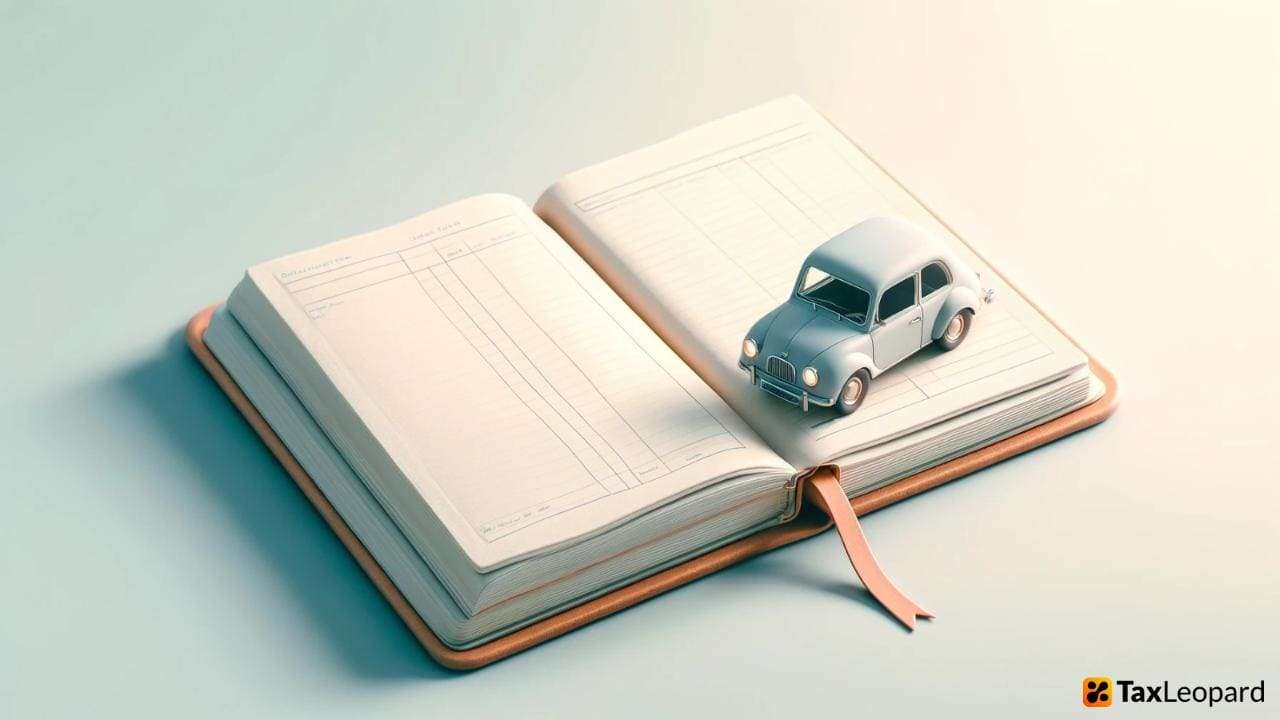Are you unsure how to maximize your tax returns from vehicle use? Many drivers miss out on substantial tax deductions because they’re unaware of proper tracking methods for car expenses. The Car Logbook Method offers a meticulous solution, enabling detailed recording of business-related car use over a 12-week period to establish a usage pattern.
This method involves using odometer readings and detailed trip logs to calculate the proportion of vehicle expenses claimable for business purposes. It not only complies with Australian Taxation Office (ATO) regulations but also maximizes potential refunds.
Explore our complete guide to understand how to maintain a compliant logbook and optimize your vehicle for work-related purposes.
What is a Logbook?
A logbook is a record that tracks every trip you take in your vehicle over a specific period, typically 12 weeks. This method is crucial for anyone seeking to claim car expenses for business use on their tax return. By carefully recording the details of each journey, such as starting and ending odometer readings, the purpose of the trip, and the kilometres driven, you can accurately calculate the percentage of vehicle use for work-related purposes. This documented evidence is essential for maximizing tax deductions under the ATO’s rules.
The Importance of Logbooks in Tracking Vehicle Usage
Logbooks serve as a reliable method to claim vehicle expenses on your taxes, especially if you use your car for business purposes. Keeping a logbook is not just a requirement but a strategic way to substantiate the business use of your car. It helps separate personal journeys from business-related travel, providing clear evidence for taxation purposes. The ATO mandates that logbooks must be kept for a continuous 12-week period, which then establishes the business use percentage for the entire financial year.
For individuals aiming to maximize their tax refunds, the logbook method is indispensable. It allows for a detailed claim of vehicle expenses, including fuel, maintenance, and depreciation, based on the percentage of business use calculated. This method often yields a higher deduction than the cents per kilometre method, which only considers the distance travelled.
Moreover, maintaining a compliant logbook ensures that you can confidently claim these deductions without fear of disputes from the ATO. Each recorded trip helps build a robust case for your tax deduction claims, making your tax return process smoother and more favourable.
Types of Logbooks
Logbooks vary widely based on their application, but in the context of vehicle management, two primary types are prevalent:
- Traditional Paper Logbooks: These are physical books where drivers manually enter details of each trip, including odometer readings, destinations, and purposes of the trip.
- Digital Logbooks: Apps and software that automate data entry, often connecting directly to the vehicle’s odometer via technology, simplifying record maintenance.
Ready to simplify your logbook management? Explore TaxLeopard’s comprehensive digital logbook services and manage everything effortlessly. Start your journey to hassle-free record-keeping today!
Car Logbook Method
The car logbook method allows you to calculate your car’s business use percentage over a continuous 12-week period. This percentage then applies to all car expenses for the entire financial year. Here’s a basic formula:
- Record all trips over the 12-week period.
- Determine the total kilometres travelled and the kilometres travelled for business.
- Calculate the percentage of business use: Business Kilometers÷Total Kilometers×100
This percentage is then used to claim tax deductions for car expenses.
Benefits of the Car Logbook Method
The Car Logbook Method offers a structured approach to calculating work-related car expenses, recognized and accepted by the Australian Taxation Office (ATO). Here are the key benefits of adopting this method:
- Accurate Deduction Claims: By maintaining a compliant log over a mandatory 12-week period, drivers can precisely calculate the percentage of vehicle use for work purposes. This allows for a more exact claim of vehicle-related expenses, including depreciation and maintenance costs.
- Maximized Tax Refunds: Proper documentation enables drivers to enhance their tax refund claims. The method takes into account all costs associated with the vehicle, ensuring that no deductible expense is overlooked.
- Extended Record Validity: Once completed, the logbook is valid for five years. This reduces the need for annual documentation unless significant changes in vehicle use occur.
- Simplicity in Claiming Larger Expenses: For those using their car extensively for business, the logbook method often results in higher claimable amounts. This is compared to the cents per kilometre method, which caps the number of work-related kilometres.
- Proof of Business Use: The detailed record serves as written evidence of business use. This can be crucial during ATO audits or when seeking reimbursements from employers.
By adopting this method, drivers ensure compliance with tax regulations and optimize their financial returns from work-related vehicle use.
Mistakes to Avoid
When using the car logbook method, certain errors can compromise your records and affect your claims. Be wary of these common pitfalls:
- Incomplete Entries: Every trip must be logged with details like date, destination, purpose, and kilometres driven. Missing entries can lead to non-compliance.
- Mixing Personal and Business Trips: Ensure that personal and business uses are clearly distinguished to avoid confusion during claims.
- Forgetting to Update Records: Regular updates are crucial. Delayed or forgotten entries can lead to inaccuracies.
- Ignoring Odometer Readings: Begin and end each logbook period with accurate odometer readings to support your claims.
- Neglecting to Keep Receipts: Save all receipts related to vehicle expenses, as they serve as essential evidence for your deductions.
By steering clear of these errors and maintaining rigorous records, you can fully leverage the benefits of the car logbook method and ensure compliance with taxation laws.
Conclusion
Utilizing a car logbook correctly could significantly boost your tax refund by accurately claiming vehicle expenses. This method is recognized and approved for substantiating your claims, ensuring every business-related trip is recorded within the year. By keeping detailed records during the required 12-week period, you secure a valid logbook for five years, easing future tax filings. Have you considered how the Car Logbook Method might enhance your tax deductions? What steps will you take to implement this method in the upcoming tax season?
FAQs
1. What types of vehicle expenses can I claim using the logbook method?
You can claim expenses like fuel, oil, maintenance, registration, insurance, and vehicle depreciation.
2. What details must be recorded in a vehicle logbook?
You must record each trip’s start and end dates, odometer readings, kilometres travelled, and the purpose of the trip.
3. Do I need to keep receipts for all car expenses when using the logbook method?
Yes, you need to keep written evidence, such as receipts, for all vehicle expenses you claim.
4. Can I start a new logbook anytime?
Yes, you can start a new logbook at any time, especially if there’s a significant change in how much or the way you use your car.
5. What happens if I use multiple cars for business purposes?
You should keep a separate logbook for each vehicle to accurately track expenses and claims for each.




